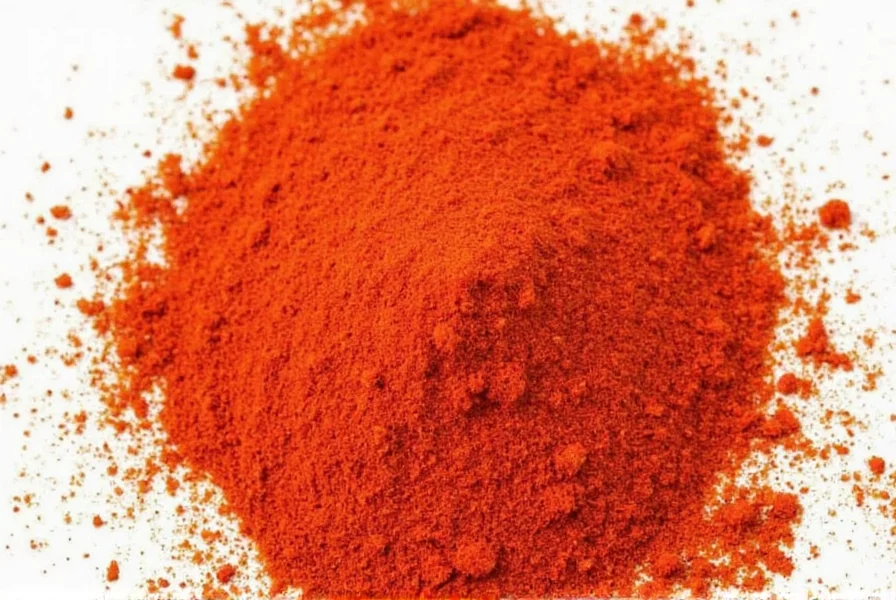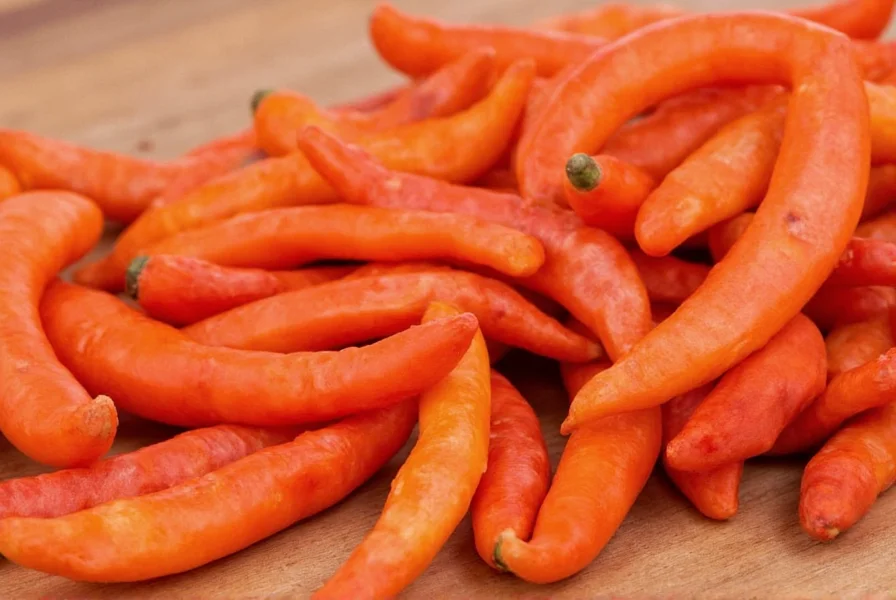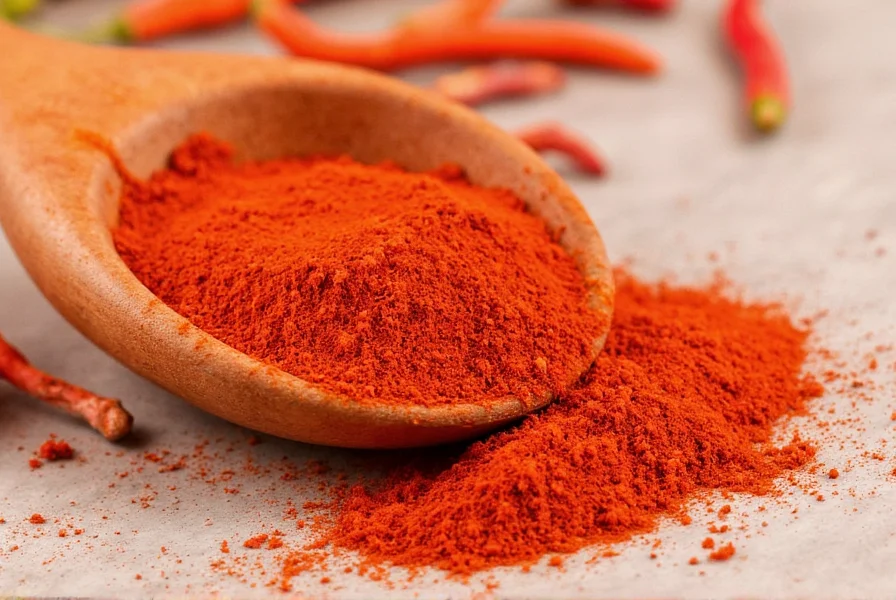When you're in the middle of cooking and realize you've run out of cayenne pepper, knowing effective alternatives can save your recipe. Cayenne brings both heat and a distinctive earthy flavor to dishes, making it essential to choose substitutes that match both characteristics for optimal results.
Understanding Cayenne Pepper's Unique Profile
Cayenne pepper measures 30,000-50,000 on the Scoville Heat Unit scale, placing it in the medium-hot category. Beyond heat, it contributes a slightly sweet, earthy flavor with subtle berry notes. Effective substitutes must address both the heat level and flavor profile to maintain your dish's intended character.
Top Cayenne Pepper Substitutes by Heat Level
Choosing the right substitute depends on whether you need to match the heat, flavor, or both. Here's a comprehensive guide to alternatives organized by heat intensity:
| Substitute | Heat Level (Scoville) | Ratio to Replace Cayenne | Best For |
|---|---|---|---|
| Red Pepper Flakes | 15,000-25,000 | 1/2 tsp flakes = 1/4 tsp cayenne | Pizza, pasta, soups |
| Paprika (hot) | 500-1,000 | 1 tsp paprika = 1/4 tsp cayenne | Stews, rubs, marinades |
| Chili Powder | 1,000-2,000 | 1 tsp chili powder = 1/4 tsp cayenne | Tacos, chili, sauces |
| Tabasco Sauce | 2,500-5,000 | 3-5 drops = 1/4 tsp cayenne | Drizzling, finishing dishes |
| Fresh Jalapeño | 2,500-8,000 | 1 tbsp minced = 1/4 tsp cayenne | Salsas, fresh preparations |
Detailed Substitute Analysis
Red Pepper Flakes: The Closest Dry Alternative
Red pepper flakes provide the most similar texture to cayenne powder while delivering comparable heat. Made from various dried chili peppers, they offer a slightly more complex flavor profile. When substituting, remember that flakes contain seeds and membranes that vary in heat intensity. For consistent results in baking or sauces, grind flakes into a powder first.
Paprika Varieties: Adjusting for Heat Sensitivity
Not all paprikas work as cayenne substitutes. Hungarian paprika offers mild sweetness, while Spanish smoked paprika (pimentón) adds a distinctive smoky note. For recipes requiring cayenne's heat without overwhelming spice, use hot paprika at a 4:1 ratio. This substitute works particularly well in dishes where color matters, as both cayenne and paprika provide vibrant red hues.
Chili Powder Blends: The Flavor-Focused Option
Most commercial chili powders contain cumin, garlic, and oregano alongside ground chilies. This makes them excellent for Southwestern dishes but potentially problematic for recipes relying solely on cayenne's pure heat. When using chili powder as a cayenne substitute for hot sauce alternatives, reduce other spices in your recipe to avoid flavor imbalance.
Liquid Alternatives: Precision Heat Control
Vinegar-based hot sauces like Tabasco or Frank's RedHot offer precise heat adjustment. Start with just a few drops and taste as you go. These work exceptionally well in:
- Marinades where even heat distribution matters
- Cold preparations like aioli or dressings
- Finishing dishes where you want to adjust heat at the last moment

Special Dietary Considerations for Cayenne Substitutes
For those with specific dietary needs, consider these specialized alternatives:
Allergy-Friendly Options
If you have nightshade allergies (which include cayenne), try wasabi powder (use sparingly) or black pepper with a dash of vinegar for heat simulation. While not identical, these provide alternative heat sources without triggering allergies.
Low-Sodium Cooking
Many commercial chili powders and hot sauces contain added salt. For sodium-restricted diets, create your own blend using pure ground chilies or use fresh peppers like serranos, which provide heat without additional sodium.
When Substitutes Won't Work
Certain recipes absolutely require cayenne's specific properties. Avoid substitutions in:
- Medicinal preparations where precise capsaicin content matters
- Traditional Louisiana hot sauces relying on cayenne's distinctive flavor
- Recipes specifically designed around cayenne's heat level
Practical Recipe Applications
Understanding how substitutes perform in real cooking scenarios helps you make better choices:
For Baking
In chocolate recipes or spiced cakes, paprika works better than liquid alternatives which can alter moisture content. Use sweet paprika at a 3:1 ratio to maintain the recipe's chemistry while adding subtle warmth.
For Sauces and Soups
Liquid substitutes integrate more smoothly than dry alternatives. When making cayenne substitute for hot sauce in barbecue sauces, use chipotle powder (1/2 tsp = 1/4 tsp cayenne) for added smokiness that complements the flavor profile.

Expert Tips for Perfect Substitution
Professional chefs recommend these techniques when replacing cayenne pepper:
- Always add substitute heat gradually—better to under-season and adjust than over-spice
- Consider the dish's cooking time; heat from fresh peppers diminishes with prolonged cooking
- For baked goods, bloom dry substitutes in a small amount of liquid first to distribute heat evenly
- When substituting in fermentation projects like hot sauce making, remember that heat perception changes during fermentation
Frequently Asked Questions
Can I use black pepper instead of cayenne pepper?
Black pepper provides a different type of heat (piperine rather than capsaicin) and lacks cayenne's earthy notes. Use 3-4 times more black pepper for similar heat intensity, but expect a completely different flavor profile. It works best in savory dishes where peppery notes complement other ingredients.
How much paprika equals cayenne pepper in recipes?
Use 1 teaspoon of hot paprika for every 1/4 teaspoon of cayenne pepper. For regular paprika, you'll need approximately 1 tablespoon to match cayenne's heat level. Remember that paprika provides much milder heat with more pronounced sweetness.
What's the best cayenne substitute for hot sauce making?
For homemade hot sauce, use fresh red jalapeños or serranos at a 2:1 ratio (2 parts fresh pepper to 1 part cayenne). Alternatively, crushed red pepper flakes work well at a 1:1 ratio. For fermented hot sauces, consider using Thai bird's eye chilies which provide similar heat with complex flavor development during fermentation.
Can I substitute cayenne pepper in baking recipes?
Yes, but use milder substitutes like sweet paprika at a 3:1 ratio (3 parts paprika to 1 part cayenne) to avoid overwhelming the delicate flavors in baked goods. For chocolate recipes, a pinch of cinnamon with a small amount of black pepper creates a similar warmth without excessive heat.
How do I adjust recipes when substituting milder alternatives for cayenne?
When using milder substitutes like paprika, increase the amount gradually while tasting. For every 1/4 teaspoon of cayenne called for, start with 1 teaspoon of paprika, then add more in 1/4 teaspoon increments until desired heat is achieved. Remember that heat perception develops over time, so wait 5-10 minutes after adding before deciding if more is needed.











 浙公网安备
33010002000092号
浙公网安备
33010002000092号 浙B2-20120091-4
浙B2-20120091-4